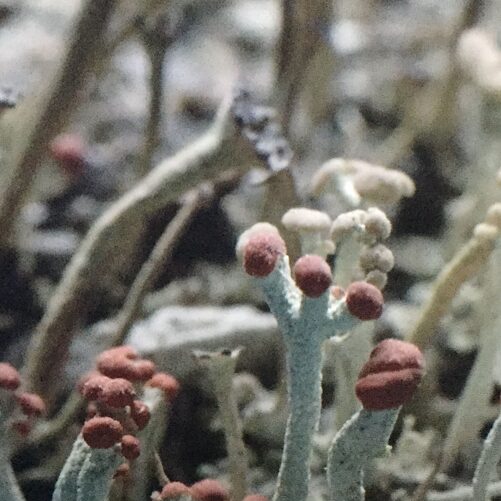This series assembles audiovisual works by contemporary artists, filmmakers, technologists, and scientists based in Germany, Canada, Mexico, and the United States. Screened together, these films interrogate the inherent anthropocentrism of cinema, often by riffing or subverting the conventions of nature films. With their intricate soundscapes; airborne and microscopic perspectives; and realms imprinted by lichen, bacteria, fur, dirt, and slime, these films work with their subjects, rather than merely being about them. The camera gives us passage to realms shimmering with indigenous mysticism, interspecies symbiosis, and sublime symmetries.
The series will be available for free online, through a password-protected link to MoMI’s Vimeo page, from December 3-11. Info and Registration here.
New Nature Shorts is a programme copresented by the Goethe-Institut and the Museum of the Moving Image, curated by Samara Chadwick and Sonia Epstein.

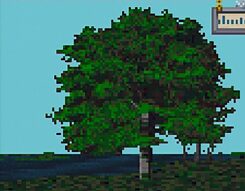 Harun Farocki "Parallele"
| © Harun Farocki GbR
Harun Farocki "Parallele I"
Harun Farocki "Parallele"
| © Harun Farocki GbR
Harun Farocki "Parallele I"Germany, 2016. 16 Minutes.
Parallel I opens up a history of styles in computer graphics. The first games of the 1980s consisted of only horizontal and vertical lines. This abstraction was seen as a failing, and today representations are oriented towards photo-realism.
www.harunfarocki.de
Lisa Jackson "Lichen"
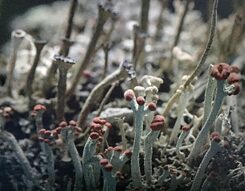 Lisa Jackson "Lichen"
| © Lisa Jackson
Lisa Jackson "Lichen"
| © Lisa Jackson
Canada, 2019. 11 Minutes.
This otherworldly short film takes a deep dive into lichen, a species that confounds scientists to this day. Lichen offers us a look at this remarkable life form and asks what we might learn from it. Ancient and diverse, both an individual and a community, lichens can live in the most extreme environments, including outer space. This meditative film bridges science and philosophy, and the words of lichenologist Trevor Goward illuminate the terrain in poetic and thought-provoking ways.
doornumber3.ca
 Colectivo Los Ingrávidos "Coatl (Snake)"
| © Colectivo Los Ingrávidos
Colectivo Los Ingrávidos "Coatl (Snake)"
Colectivo Los Ingrávidos "Coatl (Snake)"
| © Colectivo Los Ingrávidos
Colectivo Los Ingrávidos "Coatl (Snake)"Mexico, 2015. 2 Minutes.
This is the path under the spell of the snake, a time when the snake used to be the rhythmic tremor of the earth.
https://vimeo.com/user15819885
Florian Fischer, Johannes Krell "Still Life"
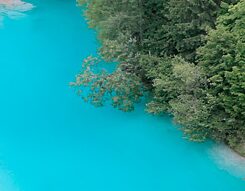 Florian Fischer, Johannes Krell "Still Life"
| © Florian Fischer, Johannes Krell
Florian Fischer, Johannes Krell "Still Life"
| © Florian Fischer, Johannes Krell
Germany, 2014. 12 Minutes.
The video work reflects the relationship people have with their environment and questions the genre conventions of the classic nature documentary. The animals looking directly into the camera, which is usually forbidden in nature documentaries, is almost aimed at and the animal is established as a part of the recipient as well as their counterpart. What starts as a landscape and nature documentary turns into an experimental essay film that transcends genre boundaries, and thus undermines their predictable narratives. A hitherto familiar environment takes on strange characteristics and oscillates between stagnation and movement, realism and hypnosis, naturalness and artificiality.
http://still-life-film.de
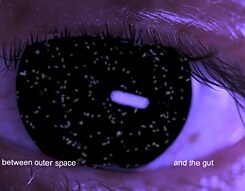 Jenna Sutela „"Holobiont"
| © Jenna Sutela
Jenna Sutela "Holobiont"
Jenna Sutela „"Holobiont"
| © Jenna Sutela
Jenna Sutela "Holobiont"Germany/Netherlands 2018. 10 Minutes.
Holobiont considers the idea of embodied cognition on a planetary scale, featuring a zoom from outer space to inside the gut. It documents Planetary Protection rituals at the European Space Agency and explores extremophilic bacteria in fermented foods as possible distributors of life between the stars. Bacillus subtilis, the nattō bacterium, plays a leading role. The term 'holobiont' stands for an entity made of many sp
www.jennasutela.com
Harun Farocki "Parallele III"
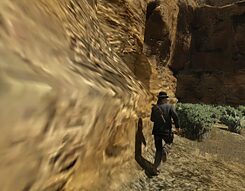 Harun Farocki "Parallele III"
| © Harun Farocki GbR
Harun Farocki "Parallele III"
| © Harun Farocki GbR
Germany 2014. 7 Minutes.
Parallel III seeks out the boundaries of the game worlds and the nature of the objects. It emerges that many game worlds take the form of discs floating in the universe – reminiscent of pre-Hellenistic conceptions of the world. The worlds have an apron and a backdrop, like theatre stages, and the things in these games have no real existence. Each of their properties must be separately constructed and assigned to them.
www.harunfarocki.de
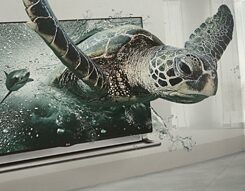 Lisa Rave "Europium"
| © Lisa Rave
Lisa Rave "Europium"
Lisa Rave "Europium"
| © Lisa Rave
Lisa Rave "Europium"Germany 2014. 21 Minutes.
Using various levels of imagery, the essay film Europium weaves a narrative around the rare earth element europium; named after the European continent, the material will be culled from the ocean floor to ensure brilliant color images on smartphone displays, and to guarantee the authenticity of euro bank notes. The film describes this seemingly mundane fact as a return and repetition of history, exposing the invisible ghosts of the past as they appear in the modern objects of our lives.
lisarave.eu

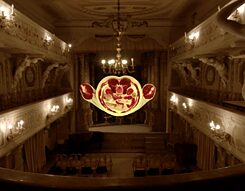 Sasha Litvintseva, Beny Wagner "A Demonstration"
| © Sasha Litvintseva, Beny Wagner
Sasha Litvintseva, Beny Wagner "A Demonstration"
Sasha Litvintseva, Beny Wagner "A Demonstration"
| © Sasha Litvintseva, Beny Wagner
Sasha Litvintseva, Beny Wagner "A Demonstration"Germany, Netherlands, United Kingdom 2020. 25 Minutes.
A monster film without monsters. Inspired by the existence of taxonomies of monsters at the heart of Early Modern European science, the film explores and reinterprets a way of seeing the natural world that is almost impossible to imagine from today’s vantage point. Early Modern naturalists were guided by a logic in which scientific truths were discovered through visual analogy. The word “monster” comes from the Latin “monstrare”, meaning to show, to reveal, to demonstrate. A Demonstration picks up on these themes in a poetic exploration of the boundaries of sight and the metamorphosis of form.
www.benywagner.com, www.sashalitvintseva.com
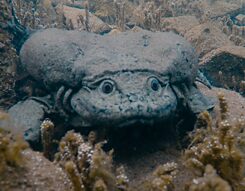 Farihah Zaman, Jeff Reichert "Nobody Loves Me"
| © Farihah Zaman, Jeff Reichert
Farihah Zaman, Jeff Reichert "Nobody Loves Me"
Farihah Zaman, Jeff Reichert "Nobody Loves Me"
| © Farihah Zaman, Jeff Reichert
Farihah Zaman, Jeff Reichert "Nobody Loves Me"USA, Peru 2017. 12 Minutes.
High in Lake Titicaca in the Andes Mountains, a frog with an unfortunate appearance is critically endangered. A film that asks, should only the cute survive?
www.reverseshot.com
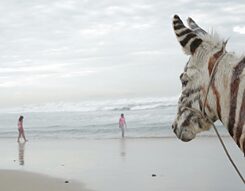 Camila Beltrán "Pedro Malheur (Pedro Misfortune)"
| © Camila Beltrán
Camila Beltrán "Pedro Malheur (Pedro Misfortune)"
Camila Beltrán "Pedro Malheur (Pedro Misfortune)"
| © Camila Beltrán
Camila Beltrán "Pedro Malheur (Pedro Misfortune)"Mexico, France 2014. 18 Minutes.
This is the story of Pedro, a donkey who lives in a garage of Tijuana's downtown, who one day decides to break free.
https://vimeo.com/user16055484
Naomi Rincon Gallardo "Resiliencia Tlacuache (Opossum Resilience)"
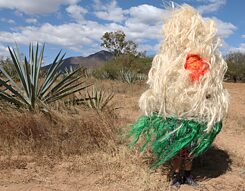 Naomi Rincon Gallardo "Resiliencia Tlacuache (Opossum Resilience)"
| © Claudia López Terroso
Naomi Rincon Gallardo "Resiliencia Tlacuache (Opossum Resilience)"
| © Claudia López Terroso
Mexico 2019. 16 Minutes.
Grounded in the valley of Oaxaca, Mexico, Opposum Resilience summons the opossum to provide an activist with the mythical powers to play dead and then revive.
http://naomirincongallardo.org/
 Oliver Husain "Garden of the Legend of the Golden Snail"
| © Oliver Husain
Oliver Husain "Garden of the Legend of the Golden Snail"
Oliver Husain "Garden of the Legend of the Golden Snail"
| © Oliver Husain
Oliver Husain "Garden of the Legend of the Golden Snail"Canada, Indonesia 2019. 14 Minutes.
Following the graceful snail through myth and place, Oliver Husain's film returns to the opening of Keong Emas (The Golden Snail) Theatre in 1984, the first IMAX theatre in Indonesia, which was also meant to promote the Golden Apple snail to farmers as a new source of protein.
http://husain.de/portfolio/goldensnail.html
